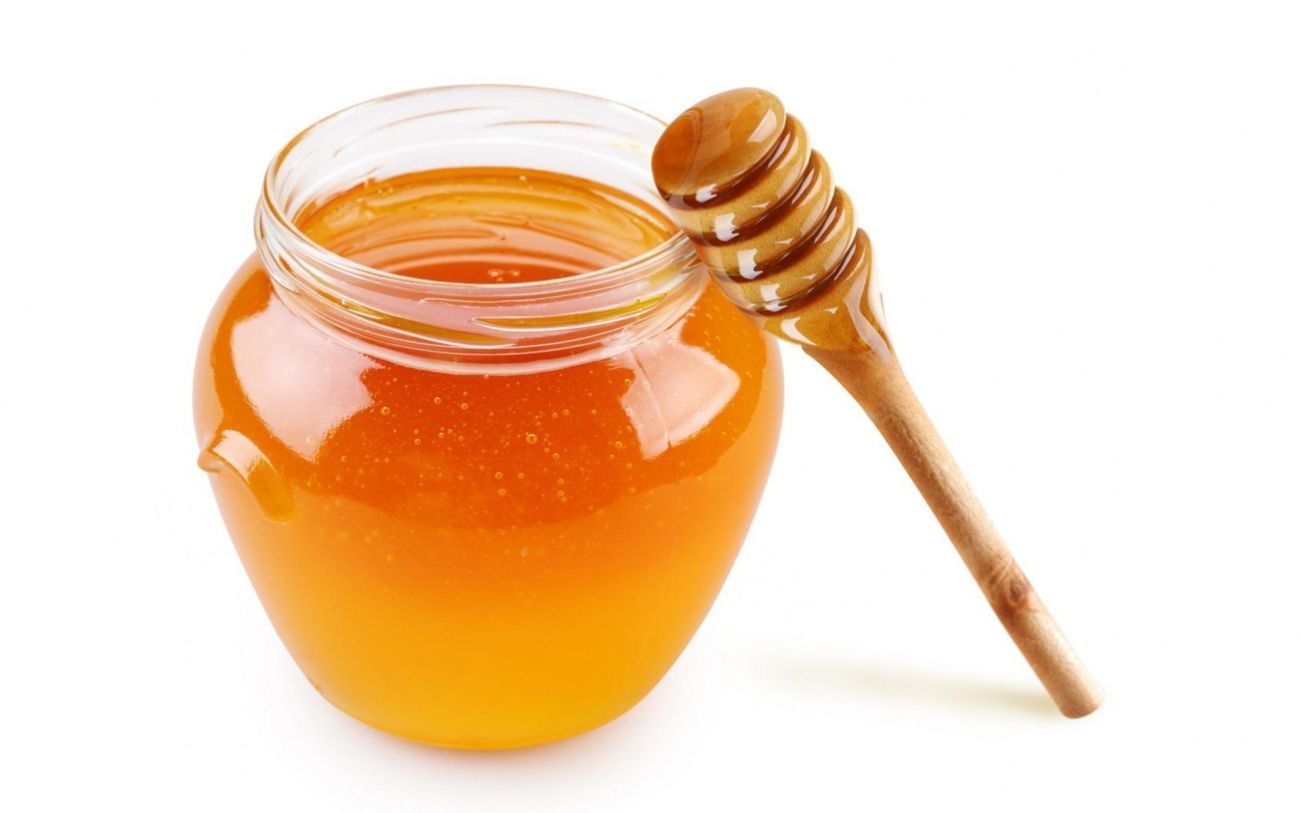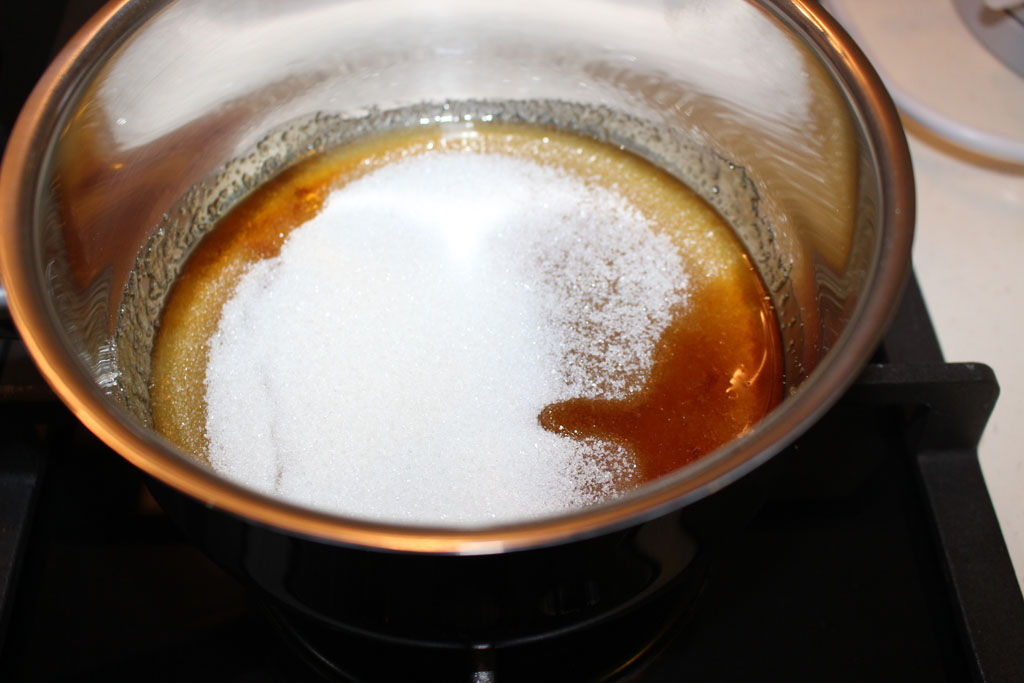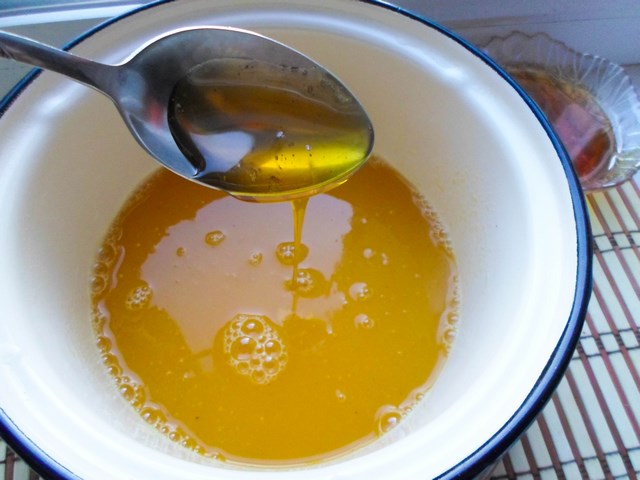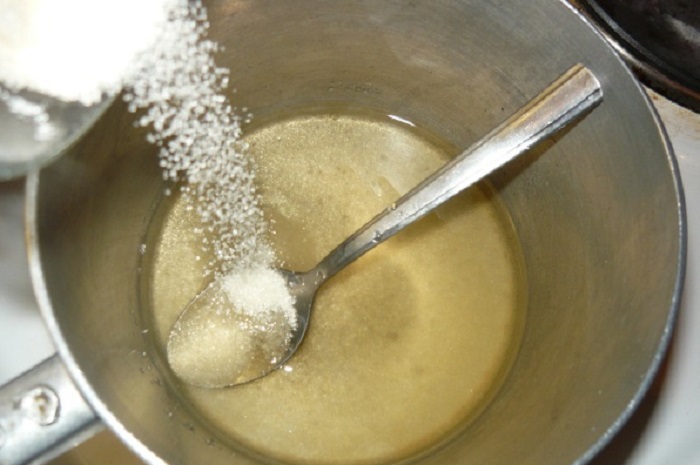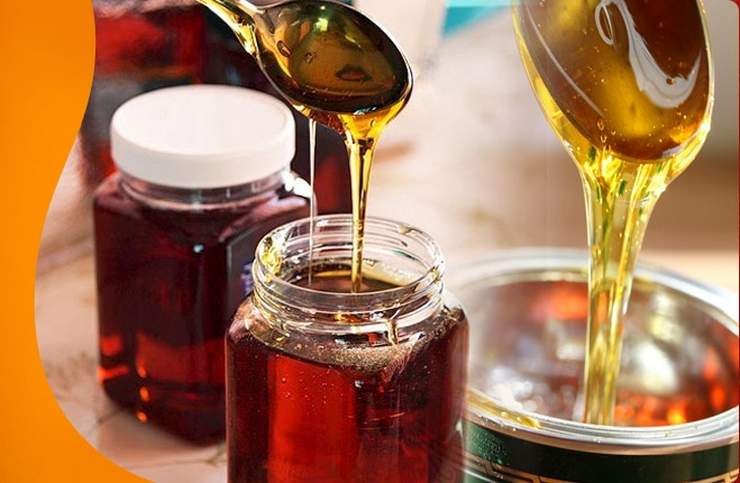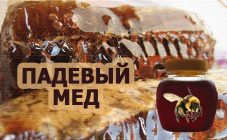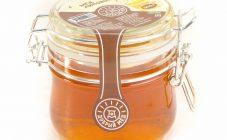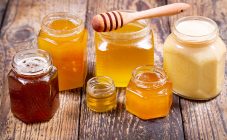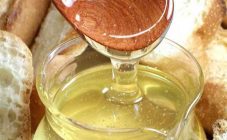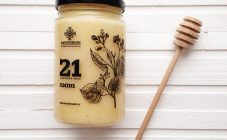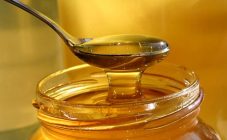Content:
Artificial honey is in demand, despite its unnaturalness, due to its use in confectionery. It has an identical taste and appearance, but lacks the beneficial qualities of a natural beekeeping product.
What is it needed for
Artificial honey is a glucose-fructose syrup equal to sucrose in sweetness and nutritional value. It contains neither enzymes, nor microelements, nor vitamins characteristic of a natural product. There are no medicinal and cosmetic properties. Therefore, it is only used as a sweetener.
It is contraindicated for people with allergies due to the presence of allergens - biologically active substances and compounds contained in pollen. The artificial product has a lower calorie content, therefore, it can supplement the diet of overweight people.
Artificial honey composition:
- carbohydrates - 80%;
- sugar in dry residue - 70%;
- water - 20%;
- impurities - 3%.
How to make honey yourself? To make a treat, you will need a few ingredients, the main component of the recipes is cane or beet sugar.
Preparation
Making artificial honey at home is pretty easy. Its preparation is based on the process of decomposition of sucrose and glucose to monosaccharides. Confectioners use it widely in the manufacture of pastries and cakes.
How to make honey from sugar? The classic recipe, no additional ingredients added:
- 70 g of sugar;
- 30 ml boiling water;
- 1 g citric acid (or formic acid - 0.5 g);
- 0.8 g of baking soda.
Before boiling honey, you need to prepare a china cup or beaker. Pour sugar into the container and dilute with boiling water. The resulting viscous mass is heated in a water bath to 80 degrees. Acid is added to speed up the process. The mixture is kept on fire for 2 hours. It is necessary to constantly stir the syrup so that the sugar does not clump. To neutralize the acid, soda is added, which can be replaced with chalk. It remains only to cool the finished syrup. Large manufacturers use starch syrup instead of sugar.
How to prepare honey to make it more like natural honey? For this, various additives are used:
- starch or corn syrup, flour, chalk for thickening;
- real honey, juice of grapes, watermelon or melon, spices, flowers to add flavor;
- tea, saffron, St. John's wort decoction to obtain a shade.
Taste matching is achieved by mixing 80% artificial honey and 20% natural honey, and adding molasses (10-20%).
Yellow cherry plum honey
Yellow cherry plum has a tonic effect, awakening the appetite and promoting the absorption of food. Organic acids in its composition normalize digestion and stool. The presence of carotenoids helps to maintain the health of the organs of vision and skin. The fruit strengthens the immune system, protects against cancerous tumors, thanks to the content of anthocyanins and vitamin C. Homemade honey can be made from cherry plum.
To make yellow cherry plum honey jam, you need the following ingredients:
- cherry plum - 0.5 l of a can;
- water - 1 l;
- sugar - 3 kg;
- honey - 100 g;
- citric acid - 1 tsp
Before boiling cherry plum honey, it is washed.The washed cherry plum is placed in an enamel saucepan, poured with 1 glass of water and left to cook until soft consistency for about 10-15 minutes. Then the cherry plum is cooled and rubbed through a sieve to get rid of the skin and seeds. Water, sugar and honey are added to the puree.
The mixed components are brought to a boil and cooked with constant stirring for 15-20 minutes. Citric acid is added 5 minutes before the end of the process. It remains to pour hot honey into jars and roll up for the winter. The result is a fragrant amber delicacy, similar to a real beekeeping product.
Can be prepared according to recipe without adding honey. Only 3 ingredients are required:
- cherry plum - 1 kg;
- water - 1.2 l;
- sugar –3 kg.
Cherry plum is washed, placed in water and boiled until soft. The water is drained into a separate container. The chilled fruit mass, wiped through a sieve, is again poured with strained broth, sugar is added. After boiling, reduce the heat, continue to cook for about 40-50 minutes. Thickened hot cherry plum honey is poured into jars and rolled up. The product should be stored in a cool, dark place.
Sugar honey
This is another counterfeit option in which the bees consume sugar syrup. Insects convert it into mono-sugar. Such a product cannot be called artificial, since bees ferment syrup in a similar way to pollen and nectar. Sugar honey composition:
- inverted sugar - 65.7%;
- reed - 4.87%;
- dextrins - 8.17%.
The composition is rather poor, there are no proteins, vitamins and mineral salts in it.
Later, more cunning ways of counterfeiting a natural product appeared. They use molasses, sucrose, invert sugar, potato and corn starch. Sometimes even laboratory tests do not allow detecting falsification. The most common counterfeits are subdivided into 3 groups: artificial honey, natural with additives to increase viscosity and weight, and also made by bees from sugar syrup.
Scientists continue to experiment, creating new varieties. Researcher N.P. Jorisch developed an expressive method for producing medicinal-vitamin and vitamin honey based on sugar syrup. Bees are fed 55% sugar syrup, add additives:
- medicines;
- herbal extracts;
- fresh blood;
- vitamins;
- milk;
- fruit and vegetable juices.
So scientists were able to get carrot, blood, milk, medicinal, apple, multivitamin honey. Over 85 varieties with medicinal properties have been developed. Such a product helps to preserve medicinal substances, is pleasant to use, and makes it easier to absorb additives due to the presence of proteins, enzymes, vitamins, and sugar. This form of drug administration is especially convenient with the bitter taste of the drug.
The difference between honey and syrup
Unscrupulous sellers use the opportunity to present artificial honey as natural, because it is difficult to recognize deception by the appearance of the product. There are certain signs of a substitute by which you can distinguish a fake:
- sour, simple aroma without aftertaste, in contrast to the multifaceted aroma of a natural product;
- does not cause slight sore throat;
- the texture is not plastic, exfoliates;
- homogeneous, since there are no impurities characteristic of natural honey: bee bread, pollen, propolis, wax microparticles;
- the texture is rough, with lumps;
- liquid consistency, the drop spreads immediately;
- foams;
- not sugar-coated;
- low price.
The correct way to determine the naturalness of a beekeeping product is by its consistency. A thin stick is dipped into the honey and pulled out. This product is stringy, flexible, forms a long thread. After its rupture, a mound forms on the surface, which gradually diverges to the sides.Such properties are explained by the low water content, only 17-20%. The fake has the consistency of glue, flows quickly, drips, forms splashes.
The natural product is gentle, easily absorbed into the skin, does not crumple when rubbed between the fingers, unlike a counterfeit. A piece of bread dipped in a real bee product for 10 minutes will harden. The syrup will soften it.
If the product was created using additives, then a fake is easy to recognize by dissolving a spoonful of honey in water. If there is no sediment, the solution has only become cloudy, then natural honey. Excess impurities inherent in a fake always create a sediment.
What kind of additives were used can be found out through the following actions:
- the presence of flour or starch is detected by the addition of a drop of iodine, the solution turns blue;
- the presence of chalk gives rise to the appearance of bubbles after adding vinegar essence.
In summer, fresh natural honey is only available in liquid form (except for rapeseed honey). When buying honey in autumn or winter, you need to take only a candied product (with the exception of the acacia variety).
Home-made artificial honey is a delicious and inexpensive treat.
